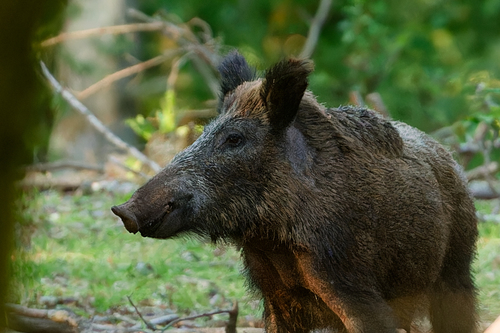
Wild Boar
The wild boar (Sus scrofa) thrives in diverse habitats as a formidable forager. Its distinctive bristly coat and tusks not only aid in defense but also in ecological balance by dispersing seeds and promoting plant growth.
10-15 years
Lifespan
80.0 - 175.0 kg
Weight
Height: 55 - 100 cm
Size
Brown, Grey, Red, Black
Color
7-10 months
Age of Sexual Maturity
2-3 months
Age of Weaning
30 mph
Top Speed
Least Concern
Conservation Status
Unknown
Population Trend
Distribution Range of the Wild Boar
The Eurasian wild pig, Sus scrofa, is native to a wide range across Eurasia and North Africa. It is originally found across most of Europe and Asia, stretching from western Europe (Portugal and Spain) to eastern Asia (Russia, China, Japan), as well as North Africa (mainly Algeria and Tunisia).
Wild Boar's Habitat
Environmental Conditions
Sus scrofa exhibits remarkable adaptability and can thrive in diverse climates ranging from temperate and Mediterranean climates to tropical and subtropical regions. The species is found in a variety of habitats, including temperate broadleaf and mixed forests, grasslands, shrublands, and even cultivated areas. These environments typically have adequate food resources, cover, and water supplies, supporting the species’ needs.
Ecological Niche
Known for being an opportunistic omnivore, the ecological niche of Sus scrofa is primarily characterized by its ability to exploit a wide array of food resources. This includes roots, seeds, fruits, small mammals, and carrion. Wild boars play an important role in their ecosystems by contributing to seed dispersal and soil aeration through their rooting behavior. Additionally, different subspecies or populations may show adaptations specific to their regional habitats, such as variations in body size or coat thickness related to climate and environmental pressures.
Copyright @ Nature Style Limited. All Rights Reserved.
 English
English